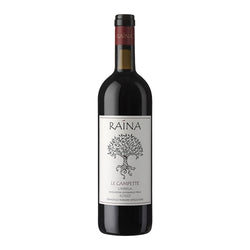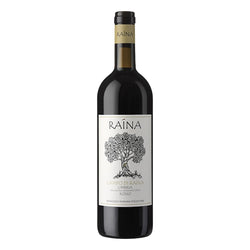Il vitigno Sagrantino è coltivato nella zona di Montefalco, in Umbria, sin dal medioevo, il più diffuso è oggi la versione secca, ma tradizionalmente se ne produce una versione passita, legata agli usi sacri e tutt’oggi prevista dalla DOCG Montefalco Sagrantino.
E’ negli anni 90 che ha inizio il fenomeno del Sagrantino, la cui crescente notorietà gli fa abbandonare le vesti di vino rustico per fargli ricoprire il ruolo del grande vino rosso. La grande struttura del vino e le intense note fruttate gli aprono i mercati internazionali dove vi è una grande richiesta di vini intensi all’olfatto e muscolosi di corpo. Oggi i produttori stanno ritornando ad uno stile meno esasperato più austero e aderente alle caratteristiche del vitigno. Montefalco non è l’unico comune dell’Umbria in cui si coltiva il Sagrantino, che è prodotto anche a Bevagna, Gualdo Cattaneo, Giano dell’Umbria e Castel Ritaldi. In tutto sono circa 1000 ettari, molto pochi per un vino di questa notorietà, che fanno del Sagrantino un vino estremamente legato al suo territorio.
Il vino che si ottiene dal vitigno Sagrantino è famoso per la sua grande intensità, concentrazione e capacità di invecchiamento grazie all’elevato contenuto polifenolico. Il Sagrantino è una delle varietà più tanniche al mondo e dà origine a vini dal colore viola molto scuro. Al naso è caratterizzato da profumi di frutti rossi, cannella e terra. È tutelato dal marchio DOCG dal 1992. Il Sagrantino di Montefalco DOCG richiede il 100 percento di uva Sagrantino, con un minimo di 30 mesi di invecchiamento, di cui almeno dodici in botti di legno, a cui deve seguire un ulteriore periodo di affinamento in bottiglia di almeno 4 mesi.
Il vitigno Sagrantino è coltivato nella zona di Montefalco, in Umbria, sin dal medioevo, il più diffuso è oggi la versione secca, ma tradizionalmente se ne produce una versione passita, legata agli usi sacri e tutt’oggi prevista dalla DOCG Montefalco Sagrantino.
E’ negli anni 90 che ha inizio il fenomeno del Sagrantino, la cui crescente notorietà gli fa abbandonare le vesti di vino rustico per fargli ricoprire il ruolo del grande vino rosso. La grande struttura del vino e le intense note fruttate gli aprono i mercati internazionali dove vi è una grande richiesta di vini intensi all’olfatto e muscolosi di corpo. Oggi i produttori stanno ritornando ad uno stile meno esasperato più austero e aderente alle caratteristiche del vitigno. Montefalco non è l’unico comune dell’Umbria in cui si coltiva il Sagrantino, che è prodotto anche a Bevagna, Gualdo Cattaneo, Giano dell’Umbria e Castel Ritaldi. In tutto sono circa 1000 ettari, molto pochi per un vino di questa notorietà, che fanno del Sagrantino un vino estremamente legato al suo territorio.
Il vino che si ottiene dal vitigno Sagrantino è famoso per la sua grande intensità, concentrazione e capacità di invecchiamento grazie all’elevato contenuto polifenolico. Il Sagrantino è una delle varietà più tanniche al mondo e dà origine a vini dal colore viola molto scuro. Al naso è caratterizzato da profumi di frutti rossi, cannella e terra. È tutelato dal marchio DOCG dal 1992. Il Sagrantino di Montefalco DOCG richiede il 100 percento di uva Sagrantino, con un minimo di 30 mesi di invecchiamento, di cui almeno dodici in botti di legno, a cui deve seguire un ulteriore periodo di affinamento in bottiglia di almeno 4 mesi.




